#military airlift command
Explore tagged Tumblr posts
Text

United States Air Force Dover Air Force Base vintage matchbook cover.
#vintage illustration#vintage advertising#matchbooks#vintage matchbooks#matchbook covers#u.s. military#cold war era#usaf#united states air force#dover air force base#dover afb#dover afb officer mess#air mobility command#amc#mats#m.a.t.s.#a.m.c.#mats atlantic division#military air transport service#military airlift command#mac#m.a.c.#dover#1607th air transport wing#douglas c-124 globemaster#c-124#douglas globemaster#436th military airlift wing
4 notes
·
View notes
Text

AFRC - C-141C Starlifter - March AFB - Sep 2004
#AFRC#Air Force Reserve Command#Lockheed#C-141#Starlifter#Cargo plane#Military transport#Military aviation#airlifter
80 notes
·
View notes
Text

Lockheed C-141B Starlifter, the original C-141A model Starlifter proved to have more lifting capacity than it had space for cargo thus the natural remedy for this was stretching the cargo bay by 23 feet 4 inches (7.11 m) and allowing the carriage of 103 litters for wounded, 13 standard pallets, 205 troops, 168 paratroopers, or an equivalent increase in other loads. 270 in service A Models were stretched and it is estimated that the increase in cargo capacity for MAC (Military Airlift Command) was the equivalent of purchasing 90 new aircraft. In addition to the lengthening they were also equipped with an in-flight refueling receptacle greatly enhancing the Starlifter's capabilities.
The first of these modified Starlifter's arrived at Travis Air Force Base in California on April 11th, 1980. The Starlifter would serve until what many would say was a premature retirement in May of 2006.
142 notes
·
View notes
Text
Did Eddie Run Away to the Army?
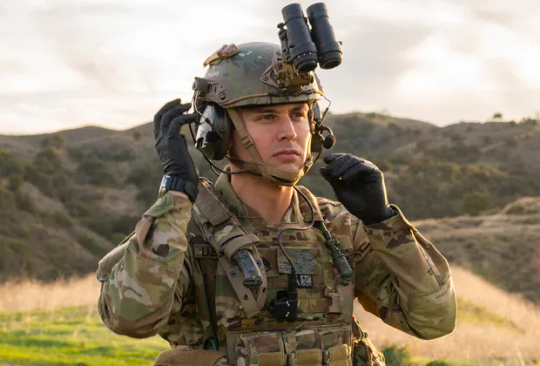
(Fox Publicity Still)
I commonly see it phrased (in fanfiction and in some posts here) that Eddie “ran away” to the Army.
What does canon say?
In “Eddie Begins” (s3e15), canon states that Eddie “will be back to Afghanistan next week” when they talk with their parents after Christopher is born.
When they are arguing about Eddie’s reenlistment (which he did without telling her), canon also has Shannon saying “I got pregnant, and you signed up. Surprise!”
In s6e16, when they are talking about proposals, Eddie says, “Shannon got pregnant. When she told me the news, I said, ‘We should get married.’ I barely even asked.”
So, it is very clearly canon that Eddie did not enlist until after Shannon discovered that she was pregnant. They got married, and he was already stationed in Afghanistan when Christopher was born. 🇺🇸 🇦🇫 🇺🇸 🇦🇫 🇺🇸 🇦🇫 🇺🇸 🇦🇫 🇺🇸 🇦🇫 🇺🇸 🇦🇫 🇺🇸 🇦🇫 🇺🇸 🇦🇫 🇺🇸 So, how did we get from Civilian Teenager Eddie to PFC Diaz, duty station Afghanistan? Let me tell you a story.
Teenager Shannon absolutely knows she is pregnant the very first day she missed her period. She runs straight into Eddie’s arms and tells him. (That’s the 4 week point of a 40 week pregnancy.)
She and Eddie go down to the courthouse the Very Next Day to get married. That same day, Eddie then goes to a recruitment office.
His recruiting and training process goes through the system “Like Magic,” and he quickly progresses through each of the steps. For 68W (Combat Medic):
Recruitment: 2 weeks
Basic Training: 10 weeks
Advanced Training (AIT): 16 weeks
Prep for deployment: 3 weeks
Total: 31 weeks
(Based on: 68W (Combat Medic) training requirements at goarmy.com; Personal stories and Ask/Answers posted by real soldiers online)
Eddie arrives, duty-bound and healthcare coverage obtained, in Afghanistan, 35 weeks after the stick turned blue.
When Eddie reports to his very first duty station as a PFC (Private First Class, or E3), he asks for leave (“I need to be in Texas in about 4 weeks because we’re having a baby!”), and his very nice commanding officer says, “Why sure PFC Diaz! Let me arrange your military airlift right away!” And off Eddie goes, arriving in El Paso in advance of Christopher’s birth.
It’s a lovely fairy tale, but this is what canon says happened, so we have to accept it as truth. 🇺🇸 🇦🇫 🇺🇸 🇦🇫 🇺🇸 🇦🇫 🇺🇸 🇦🇫 🇺🇸 🇦🇫 🇺🇸 🇦🇫 🇺🇸 🇦🇫 🇺🇸 🇦🇫 🇺🇸 Now, I could tell you all of the ways that this is a TV fantasy. I was in the Navy for 11 years, so I already took it with a grain of salt. I did some poking around (because, as former military, I know that what goes for the Navy doesn’t necessarily go for the Army where it relates to duty assignments), and found various Reddit chats where enlistees were asking questions about recruitment and 68W training, and I skimmed through a bunch of answers to get a general idea of timelines, and then meshed that with my own experience.
The numbers above are an Absolute Minimum. No delays in processing; no wait for the next Basic class start date; no gap after Basic (and no picking up trash and cleaning toilets at Ft. Sam) while awaiting for the next Combat Medic course to start; no leave taken after AIT; and no training or medical period at his first duty station before deployment (and troops are deployed from stateside commands as a group—you don’t just get on a plane and show up in Afghanistan). Eddie would need to take leave and return to Texas for the birth. He would have earned 14 pay periods worth of leave at this point, which would add up to 17.5 days on the books, so he would have enough days to go home for 2-ish weeks. However, he is NOT EVER going to go to Afghanistan and then fly back 4 weeks later. That’s a pipedream. If they’re nice, they’ll keep him stateside and send him for additional training at Ft. Sam Houston (where 68W AIT is held). But, if, as canon states, PFC Eddie is already in Afghanistan, it is highly doubtful that he’d be back for the birth.
And this is even assuming that Teenager Shannon knew she was pregnant on the very first day she missed her period. 🤔 Yeah, probably not.
[This is also not even getting into the fact that, based on the birthdate on her tombstone, by Texas state law, Shannon would have entered kindergarten in September 1998, at the age of almost-six. She would have graduated in 2011 (the year Christopher was born), which would totally turn the above timeline into an unreachable fantasy, unless she and Eddie were in different grades (maybe someone else can figure that bit out). So, we’ll assume she moved to TX from a state that had a December 31 cut-off (which, in the 90s, was most northern states—I’m from PA, and currently live in CT, and, until recently, this was the date in both places), and that Eddie was born sometime before September 1, 1992 (so he could start school in September 1997). Then they would have both graduated in May 2010. There, that fixes it. 😁]
🇺🇸 🇦🇫 🇺🇸 🇦🇫 🇺🇸 🇦🇫 🇺🇸 🇦🇫 🇺🇸 🇦🇫 🇺🇸 🇦🇫 🇺🇸 🇦🇫 🇺🇸 🇦🇫 🇺🇸 So, did Eddie “run away”?
I think, to even make the Fantasy Timeline happen AND result in placement in the career path Eddie chose (because it’s a selective field with a much higher-required ASVAB score and more training requirements than other high-demand fields like Infantryman), he needed to have been considering it anyway. The military is a really good choice for a boy (or girl) from Texas who doesn’t want to go to college right now, but wants to learn job skills and earn college benefits. If he already was thinking about it, he would already know that the military dependent health benefits (and housing benefits) are pretty darn good. Not perfect, but then, no insurance plan is these days (I could tell you a story about where I, active military, gave birth, vs. the jacuzzi-equipped birthing suite my coworker’s military dependent wife got to use, but this is already too long).
Viewer opinion of Eddie’s enlistment in the Army is very much colored by his memories of Shannon in “Eddie Begins” (see quotes, above), and their argument in “Haunted” (s2e07–and, yes, I did notice that it’s a Ghost Title 😁).
Eddie: What did you need that I didn't give you?
Shannon: You! I needed a husband and a co-parent. And instead, all I got was a life alone in Texas with a baby and you on another continent. I needed someone to have my back.
Eddie: I always had your back.
Shannon: No. You were in Afghanistan.
It’s also colored by civilian opinions on and stereotypes of military personnel and military life.
Military people have families. Many of them have children and good, solid marriages. They rotate back and forth between stateside and forward deployment, so they aren’t always gone (except when there’s an actual war, like in the early 20-teens, so bad timing for Eddie). During peacetime, you don’t deploy over and over again without being assigned to what the Navy calls “Shore Duty” without volunteering for it, usually in writing. Career military people enter service and stick around for 20 years, because the benefits are good, and the retirement pay is good, too. Retiring on half pay at age 38 is not a horrible thing.
Eddie’s fatal character flaw is not that he ran away: It’s that he internalizes his decisions, and makes knee-jerk decisions without discussing them with anyone. Join the Army. Reenlist. Move to LA. Leave the 118. Yep. And I can see why Shannon was royally ticked off. He should have talked with her, but, really, I’m thinking the conclusion would have been the same in the end—she just would have felt better about it. Having your child diagnosed with a major health issue is NOT the time to lose your health insurance, even briefly. If they talked, they could have discussed Eddie rotating stateside at his next opportunity—duty station assignment doesn’t align with enlistment period, after all—closer to Shannon’s mother. A compromise.
I guess what really annoys me is when people use Eddie “running away to the Army” to justify Shannon’s actions (even, or especially, when Eddie says this himself). Eddie’s military service gained him health benefits for his pregnant wife and subsequent child, and health coverage for that same child; he went home on leave when able; and he video-chatted with his wife and child routinely. As Eddie says in s3e15: “I was in Afghanistan, not Cancun.”
Let’s not compare that with Shannon ghosting her own child for two years. Per s2e07, this is also canon, folks.
There’s a reason for the Ghost-themed title, after all.
P.S. I know I’m going to take flack for this one, but “Who Cares?”
🤷🏻♀️
69 notes
·
View notes
Text

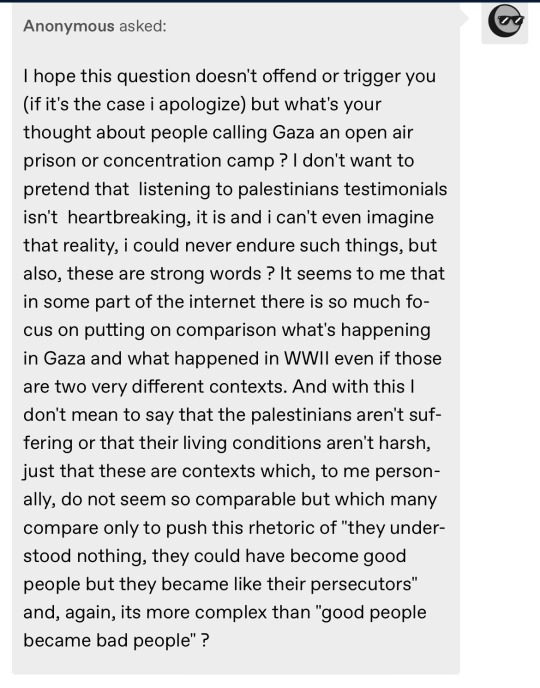

There's a lot more like this.
I think we can take some pride in the fact that, even on a steadfastly very very pro-Jewish and pro-Israel site, readers are NOT galloping towards revenge and butchery, they are showing basic humane care for Palestinians. It is much better than you see aimed at Jews from our enemies.
So much of the popular understanding around Gaza has been twisted by propaganda and weasel-words. People can be astounded - or accuse you of lying - if you point out the normalcy, even luxury, in the sectors where the favored and well-connected live, or that the widespread accusations of "starvation" are a pure hoax, that so much of the "humanitarian aid" meant for them are just photo ops. The obviousness of how much the outside world doesn't care about Gaza is matched only by the obviousness of how we are expected to forget the hysteria and moral panics of each successive "report".
When the same people who claimed Gaza was a starving ghetto that would spontaneously Rapture into total emptiness four years ago now make more accusations against Israel's conduct, how are we supposed to believe them?
As a Jew, I cannot respect any notion of "genocide" that is NOT both deliberately aimed at cutting down / destroying a racial / ethnic population and also at least somewhat successful at it. The Palestinian population has never shrunk, has more than quadrupled since 1967, and in Gaza has more than doubled in the last 20 years. If that was like the Holocaust, like Warsaw, where do I sign up? There are people who recommend different definitions of "genocide," but before I take them seriously I would first ask them whether they apply the same term to the Oct. 7 massacre, or if they are purely bullshitting together ad-hoc terminology, like how Amnesty International made up a new definition of "apartheid" that is explicitly not supposed to resemble South Africa at all so any differences between Israel and South Africa are irrelevant neener neener no backsies.
My position is that there is a difference between genocide and killing civilians while bombing military targets. But I also recognize that beyond a certain number of dead civilians, that difference might be moot. I am still very worried that we might see a true cataclysm in Gaza. That that there could be a civilian death toll one or two orders of magnitude greater than any previous round. It never used to be true and I really, really do not want it to actually come true now. As my previous post said, I spent a year hoping the Israeli government would be less a gang of talentless fuckups than they seemed to be, they dashed those hopes, and now they're the same ones supposed to be managing the counterattack. They have to know the risks. It is their job to know and plan around those risks.
David Schraub does a decent job of capturing the "what comes next?" part. There needs to be SOME vision of breaking this cycle. The best scenario I let myself imagine would be that Israeli raids are able to truly wipe out Hamas' command capabilities, weapons, and infrastructure, and Munich-style track down and kill all the perpetrators of Oct. 7. The most respectable and talented leaders in the Palestinian Authority (*crickets*) will have to be physically airlifted into Gaza to assume command, maybe with some plucky UN peacekeepers, then Israel and regional partners (assuming it still has any) work on humanitarian aid and rebuilding so the locals feel like there is some option for a future that doesn't involve suicide belts. I have no hope for live hostage rescue.
138 notes
·
View notes
Text
Syria!Series Part One: Syria: Beau 'Cyclone' Simpson x Reader
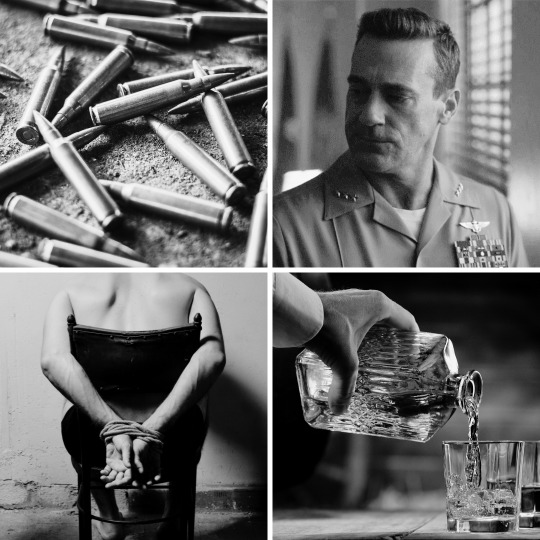
Tagging: @crazy4chickennuggets @kmc1989 @withakindheartx @chickensrule @iwannabeinthesequalmrghostface @justameresimp @handsupforamiracle @lxaah11 @librarian1002 @littlebadariell @imaginecrushes @luckyladycreator2 @flrboyd @nani-kenobi @areamir @b-bradshaw @adaydreamaway08 @crimeshowjunkie @shepgurl @ashcosmo @inkandarsenic @caffeinatedwoman @tortilla-maria1 @lemmons1998 @dr-alan-grantler @dizzybee03 @watashiwasun @burningpeachpuppy @penguin876 @haley-hotchner @deliriousfangirl61 @agentorange9595

You’ve been married to Beau three years when he’s deployed to Syria. You’re situated in San Diego, working with the Victim’s Support Service. The two of you have talked about settling down here, you both love the area and Beau’s up for promotion soon which will give him more stability and better choice of assignments. It feels like the right time to put down roots.
The first indication you get that something is wrong is when Commander Larson steps into your office. You’re too enthralled in the casefile you’re reading to register his presence until you hear the door click shut behind him.
It’s the expression in his face that stops you in your tracks. You’ve seen Commander Larson deliver bad news a handful of times throughout your career and he has the exact same look in his eyes now.
“Beau’s been captured.” He tells you.
You don’t hear anything else after that, just the roaring of blood in your ears as selective words filter through. You learn that it had happened during a navy training exercise, that a Syrian officer he had been working with was also taken.
You fall apart, for two whole days you’re a complete mess because the love of your life is missing and there’s fuck all you can do about it.
It’s Soloman that calls you from a military hospital in Damascus, that tells you the unofficial story. Three hours ago Beau had turned up at a military checkpoint gravely injured, dragging Captain Zadir Abadi, along with him. The two of them had been barely alive when they’d been airlifted.
“It’s bad Ally, they tortured him.” Soloman tells you, you can see the gravity of the situation in his features as he rubs his palm over his weary features. “He’s been stabbed multiple times, they’re not sure he’s going to make it through the night.”
You go to church that evening, for the first time since you left Idaho. You light a candle, and you say a prayer because there’s nothing else that you can do and the reality of that devastates you. You don’t sleep, you don’t eat, instead you lie on the couch with a pillow clasped to your chest watching reruns of Friends and waiting for your phone to ring.
Solomon calls again in the afternoon; he looks as exhausted as you feel. His jaw line is peppered with five o’clock shadow and his eyes bloodshot.
“They��ve taken him back into surgery.” He tells you, shaking his head. “He started bleeding again this morning, if they can’t get it under control…”
He looks away from the screen, swallowing hard before he opens his mouth to speak.
“Zahir passed away this morning.” Solomon tells you. “His injuries were too great, infection set in. There was nothing the doctors could do.”
You close your eyes for a second, inhaling through your nose and exhaling through your mouth because you hear the undercurrent of what he’s saying.
Prepare yourself.
You don’t sleep again that night.
***
Beau survives the surgery. He spends days drifting in and out of consciousness, in a haze of agony and numbness. The painkillers they give him are strong, they mess with his head, twisting his dreams and reality into one long nightmare.
The only consistent thought he has is you. He wants you; he thinks he tells Solomon that when he’s semi lucid. The next time he’s awake Solomon hands him his tablet and there you are on the screen, looking as pretty as the day he met you.
“Ally,” He drawls as he settles back into the pillows.
It’s the first time he’s laid eyes on you since this whole ordeal started and he feels so fucking relieved to see you. You were the only thing he thought about during his time in that bunker, the thing that kept him going. Everytime they cut into his flesh, stabbed him, humiliated him, he thought about you, that smile, that laugh, the way you look at him like he was the only man in the entire world.
“Beau.” You whisper and he smiles, tears searing at his eyes because just hearing the sound of your voice soothes something deep inside his soul.
“Talk to me.” He requests, his head coming to rest against the pillows. “I just need to hear your voice.”
Love Beau? Don’t miss any of his stories by joining the taglist here.
Interested in supporting me? Join my Patreon for Bonus Content!
Like My Work? - Why Not Buy Me A Coffee

#beau cyclone simpson#beau cyclone simpson x reader#beau cyclone simpson x you#beau simpson#beau simpson x you#beau simpson x reader#top gun maverick
74 notes
·
View notes
Text
Everything I Found from House Of Leaves Appendix B: "Bits"
Going through this book has been a nightmare I never want to wake up from. At the point where we read Appendix B during Holloway's (his name sounds so much like hallway) rampage, I read the appendices as embedded, and I've made some interesting discoveries about the lines included in Appendix B no one's pointed out, including historical and architectural knowledge. Disclaimer, I'm no expert, just a girl who loves this book.
I will go in order by date. Some of these will be obvious, others not so much.
Jan 18, 1955
"Art with a capital A" could refer to Arthur D Simmons, an army special forces colonel that trained recruits at an air force base during the time period, and likely could've trained Zampamó.
Aug 29, 1960
Joseph Kittinger, Command Pilot, set the world record for highest skydive from a service plane at that time.
Apr 29, 1975
Operation Frequent Wind was a mass evacuation via airlift in Saigon, Vietnam, signaled over radio to begin by the song White Christmas. From April 29th to April 30th. STOP is telegram formatting.
Mar 18, 1989
M.A could reference Military Assistance Command Vietnam, usually MACV, a joint army, navy, and airforce service in Vietnam.
Oct 11, 1990
Günter Nitschke is an author on East Asian architecture. See author bio here. Norberg-Schulz is an architect who wrote architectural theory and is also quoted at the start of chapter six. Glas is a book by French Philosopher Jacques Derrida, which MZD once worked on a documentary about. 1974 is year of original publication. John P Leavey Junior and Richard Rand are English translators of the book. Z seems upset he cannot get the original French edition.
May 26, 1991
According to the House of Leaves forum this translates to "What are you watching?" "Nothing, sir.". Thread includes speculation on what this could mean. Thank you sutrix.
Apr 9, 1996
Parlipomena means "things omitted from a work and added as a supplement".
Oct 2, 1996
The Seven Lamps of Architecture is an essay by John Ruskin, listing demands for architecture to be considered "good", many of which fit thematically with House of Leaves.
Sacrifice: Architecture should be done to please God.
Truth: Refers to honesty (in book in reference to materials and structure).
Power: "Buildings should be thought of in terms of their massing and reach towards the sublimity of nature by the action of the human mind upon them and the organization of physical effort in constructing buildings."
Beauty: Aspiration towards God
Life: "Buildings should be made by human hands."
Memory: "Buildings should respect the culture from which they have developed"
Obedience: Pre-existing English architectural values should be followed.
The lamps have a clear connection to the House, but lamp number seven is fascinating in context with colonialism and the war Z was fighting in when he wrote this.
Dec 18, 1996
James D Redwood is a Vietnam vet who wrote Love Beneath the Napalm, stories about the war and it's after effects. Z probably had contact with him during the war.
Interesting stuff. As for any other mysteries in Bits, I have no idea. Hopefully this can be of help to someone getting through HOL.
11 notes
·
View notes
Text

Thunderchiefs at Hill AFB (cupido)
hill.af.mil/News/Article-D…
@kadonkey via X
1970s: The F-105 and Reserve 508th Tactical Fighter Group at Hill AFB
May 21, 2020
HILL AIR FORCE BASE, Utah --
Editor's note: This feature is part of a Hill Air Force Base 80th anniversary series. These articles will feature the base’s historical innovations and achievements, and will highlight mission platforms that have been operated and supported throughout the decades.
During the 1970s, several Hill Air Force Base tenant organizations made various changes. Formerly assigned to the 452nd Tactical Airlift Wing, the Air Force Reserve 945th Military Airlift Group was reassigned to the 301st Tactical Fighter Wing on July 1, 1972. Resulting from this reassignment, the first of 18 newly assigned F-105 Thunderchief aircraft arrived at Hill AFB on September 24, 1972, for the 945th.
Shortly thereafter, on November 27, 1972, the last C-124 Globemaster assigned to the group departed Hill AFB. A few months later, the 945th inactivated. Concurrently, the AFRES constituted the 508th Tactical Fighter Group and activated the unit at Hill AFB. The new group received the F-105 aircraft which had briefly been assigned to the 945th. Three months later, AFRES inactivated the 508th on March 25, 1973, and in its place activated Detachment 508 of the 301 TFW in order to provide the wing’s organizational structure conformity with other units in the command. Subsequent requirements, however, necessitated the reactivation of the 508th Tactical Fighter Group on October 17, 1975, at which time Detachment 508, 301 TFW, inactivated.
On October 10, 1978, AFRES activated the 405th Combat Logistics Support Squadron at Hill AFB and assigned the unit to the 508 TFG. Prior to this, on October 1, 1977, the 508th lost three of its assigned squadrons: the 7th Supply Squadron, Mobile; the 7th Maintenance Squadron, Mobile; and the 5th Augmentation Squadron, Wendover Auxiliary Field.
The AFRES inactivated the 508th Tactical Fighter Group at Hill AFB on October 1, 1982, concurrently activating the 419th Tactical Fighter Wing. Despite the fact that the 419th Fighter Wing’s 466th Tactical Fighter Squadron continued to fly the F-105 until March 1984, the 508 TFG was the last unit assigned the F-105. In June 1983, the 419th TFW, assigned the General Dynamics F-16 Fighting Falcon, began retiring the F-105s it inherited from the 508th TFG upon the unit’s inactivation.
Shortly before beginning this process, the 466th TFS flew a 24-ship “diamonds on diamonds” formation with the F-105 as a salute to the aircraft’s many contributions. The F-105 flew and fought in the skies of Southeast Asia during the conflict in Vietnam. On February 25, 1984, F-105 combat veterans reunited at Hill AFB and conducted the final F-105 missing man formation.
During this ceremony they dedicated aircraft 62-4347, the F-105 with the most air time, as a monument to those who served with F-105s and especially those who gave their lives while doing so. The last F-105 (aircraft 62-8287, an F model) departed Hill AFB on March 10, 1984, for Chanute AFB, Illinois, where it was put on display.
12 notes
·
View notes
Text

General Darren W. McDew (September 29, 1960) was born in Rantoul, Illinois. He graduated with a BS in Engineering from the Virginia Military Institute.
He trained as a pilot in the 82d Flying Training Wing, Williams Air Force Base. He took combat crew training in the Boeing KC-135 Stratotanker in the 93rd Bomb Wing at Castle Air Force Base. He was at the 42nd Air Refueling Squadron, Loring Air Force Base, as a pilot instructor and flight commander. He served in administrative and support capacities in DC, as an Air Force aide to President Bill Clinton. He was promoted to the rank of Colonel and was put in charge of the 62nd Operations Group, McChord Air Force Base. Command assignments were with the 375th Airlift Wing, Scott Air Force Base, 43rd Airlift Wing, and Installation Commander, Pope Air Force Base, Air Force District of Washington, Andrews Air Force Base, and two stints at the Pentagon. He was made Commander of the 18th Air Force and promoted to Lieutenant General.
Upon being promoted to the rank of 4-star General, he took command of the Air Mobility Unit at Fort Scott Air Force Base. He served as Commander of, the United States Transportation Command headquartered at Fort Scott, which provided air. He is responsible for coordinating the Air Force’s Air Mobility Command, the Navy’s Military Sealift Command, and the Army’s Surface Deployment and Distribution Command.
Among his numerous awards and decorations are the Armed Forces Service Medal, Global War on Terrorism Service Medal, Kosovo Campaign Medal, National Defense Service Medal, Air Force Distinguished Service Medal, Legion of Merit, Defense Superior Service Medal with oak leaf cluster, Air Force Command Pilot Badge, and Presidential Service Badge.
He logged more than 3,300 flight hours in military aircraft ranging from the small, twin-engine Cessna T-37B, to the Northrup T-38A supersonic trainer jet, the Bell UH-1N Twin Huey helicopter, the Lockheed C-130 Hercules turboprop transport plane, to the mammoth four-jet engine Boeing C-17 Globemaster III.
Married since 1983 to Evelyn K. Massenburg, they have a daughter and a son. #africanhistory365 #africanexcellence
9 notes
·
View notes
Text

US Air Force 1LT Greg Yost, 446th Aerial Evacuation Squadron, wears his traditional Rodeo Hat for good luck at the start of the USAF Air Mobility Command sponsored Rodeo 98 airlift competition, June 19, 1998.
Record Group 330: Records of the Office of the Secretary of Defense
Series: Combined Military Service Digital Photographic Files
Image description: Close up photograph of a man looking off into the distance. He is wearing a hat that looks like a fuzzy white and red chicken is sitting on his head.
#archivesgov#June 19#1998#1990s#military#U.S. Air Force#USAF#hat#chicken#this is a wild series to look through since you get pre-9/11 photos like this#and then post 9/11 things look very different
59 notes
·
View notes
Text

airsLLide No. 1661: N441J, McDonnell Douglas DC-8-63CF, Arrow Air, Miami-International, March 15, 1988.
Long time Miami classic Arrow Air was part of aviation entrepreneur George Batchelor's empire, formally set-up as subsidiary of his IAL International Air Lease. Formed in 1980, it quickly acquired a fleet of McDonnell Douglas DC-8 Super Sixty series aircraft that it used both on freight as well as passenger flights. The latter were often operated on behalf of the US Military Airlift Command, carrying servicemen to and from their bases abroad.
After the loss of one of its DC-8 on such a troop flight shortly before Christmas 1985, Arrow Air focussed on the freight business, although, technically, some of its aircraft earlier acquisitions like N441J above could theoretically still be used for either cabin layout. Most later additions to the fleet however were fully converted freighters.
Arrow Air by the way used the radio call sign 'Big A'. Self explanatory, when looking at its appearance, indeed...
3 notes
·
View notes
Text

C-5 Flare Dump
#Lockheed#C-5#Super Galaxy#Air Mobility Command#Jumbo jet#military#transport#cargo plane#airlifter#flares#flare dump#Air Force
87 notes
·
View notes
Text

1-UAE!!
Under the guise of saving refugees, the United Arab Emirates is running an elaborate covert operation to back one side in Sudan’s spiraling war supplying powerful weapons and drones, treating injured fighters and airlifting the most serious cases to one of its military hospitals, according to a dozen current and former officials from the United States, Europe and several African countries.
The operation is based at an airfield and a hospital in a remote town across the Sudanese border in Chad, where cargo planes from the Emirates have been landing on a near-daily basis since June, according to satellite imagery and the officials, who spoke on the basis of anonymity to discuss sensitive intelligence.
Despite strained Sudan-UАЕ relations, gold shipments flowed freely from Sudan to Dubаi, with exports facing no obstacles and operating with official approval in Port Sudan. Political tensions didn't disrupt the lucrative trade, which continued despite the December 2023 expulsion of diplomats and accusations of smuggling.
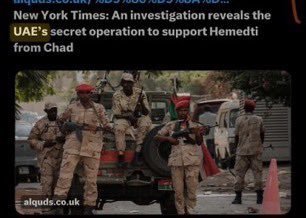
2- Russia (Wagner group)
The Russian mercenary group Wagner has been supplying Sudan’s Rapid Support Forces with missiles to aid their fight against the country’s army, Sudanese and regional diplomatic sources have told the CNN.
The sources said the surface-to-air missiles have significantly buttressed RSF paramilitary fighters and their leader Mohamed Hamdan Dagalo as he battles for power with Gen. Abdel Fattah al-Burhan, Sudan’s military ruler and the head of its armed forces.
(Reports years ago claimed the hemedti smuggles gold to Russia)
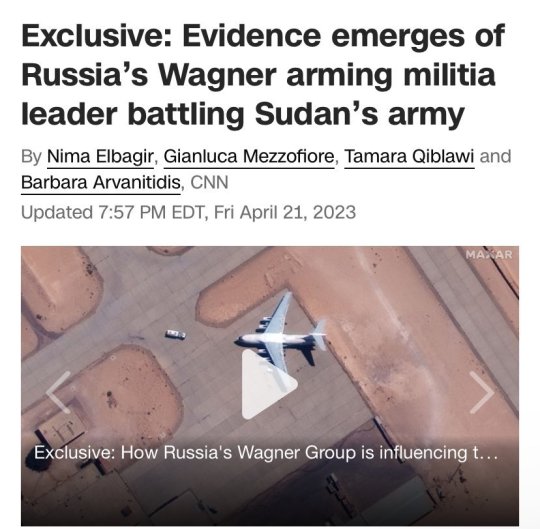
3- Libya
The eastern Libya strongman, Libyan National Army (LNA) commander Khalifah Haftar, has actively backed the paramilitary Rapid Support Forces (RSF) against the Sudanese military and armed forces in the ongoing fighting in Khartoum and its surrounding environs.
Haftar calculates that an RSF victory in the Sudan power struggle would secure valuable trade and smuggling routes through Sudan.
By supporting the RSF, Haftar is aligned with the United Arab Emirates (UAE) and the Russian mercenary Wagner Group.
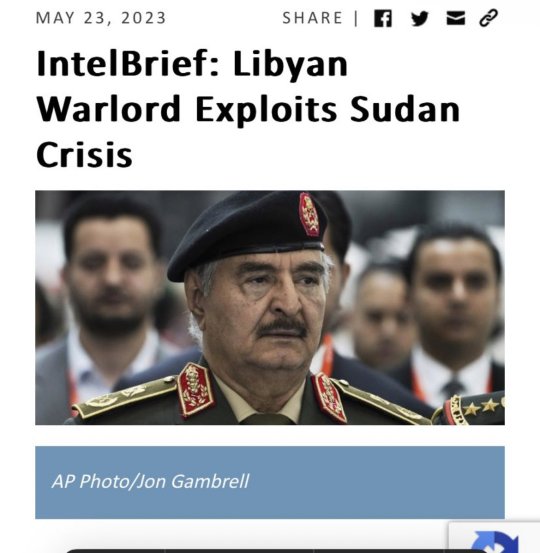
4- Chad
Chadian sources said that the Chadian transitional government is building a new military base or depot 6-7 kilometers north of the city of Abéché in Wadaday state, with full funding from the UAE to support the Rapid Support Militia.
Mobilization campaigns and movements are now underway to prevent this criminal operation carried out by the Chadian government against citizens, with funding from the UAE, to destroy Sudan.
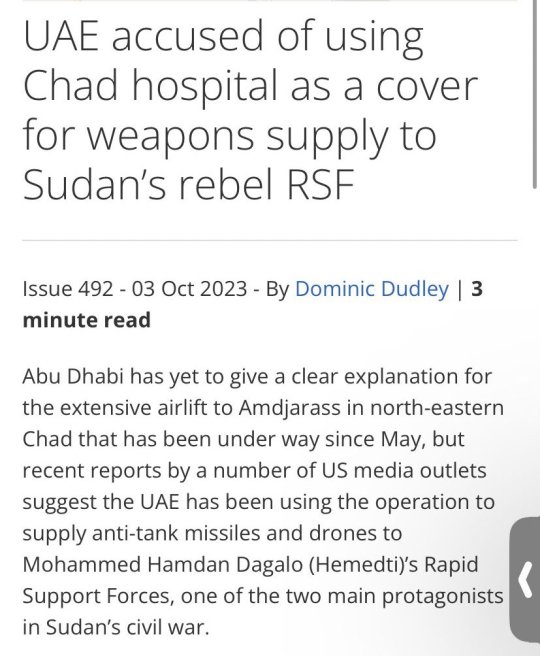
5- Ukraine
In September 2023, CNN reported that Ukrainian special services were behind a series of drone strikes and a ground operation near Sudan's capital, Khartoum, which targeted Rapid Support Forces (RSF), a militia backed by the Wagner Group, a Russian mercenary outfit.
6- Israel
There has been evidence that Israel is also sending supplies to the RSF. Israel wants to curb Iran's expanding influence in the region, while halting human and arms smuggling routes from Sudan to Gaza. Better relations with Sudan would also enhance Israel's ties with other African countries, helping it to gain access to African markets, especially after the suspension of Israel's observer status in the African Union.
Also using Sudan’s war for cheap propaganda and diverting attention from their atrocities in Gaza by claiming that Hamas Is tied to the RSF. Hemedti tried to organize a secret meeting with officials from the Israeli Mossad without the knowledge of the government and the Sudanese army in Khartoum,on January 2022, but he was forced to inform the army of the meeting in the end, after Israel announced.
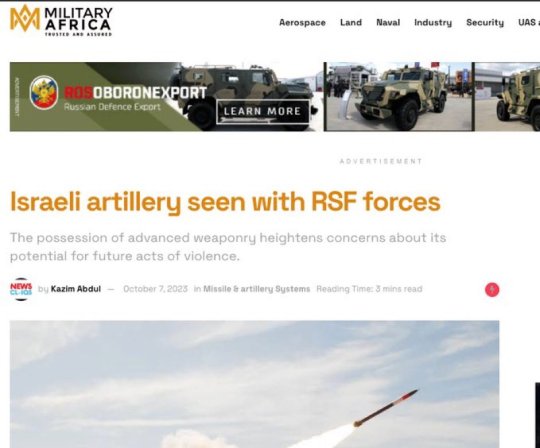
7- Iran
Media reports said Iran has supplied Sudan's army with combat drones. The army has not denied the claims. Later, Sudan's Foreign Minister visited Tehran and held talks with high ranking officials as part of the two countries' efforts to restore their diplomatic relations.
8-The EU
The European Union has been accused of "hiding" the impact of its funding of the Sudanese government and its paramilitary forces as part of a programme to stem the flow of migrants from Africa to Europe. Though the EU claims it provides no funding to the government, activists and researchers say otherwise, arguing the organisation's migration initiatives also benefit, at least indirectly, the country's notorious Rapid Support Forces (RSF) paramilitary group.

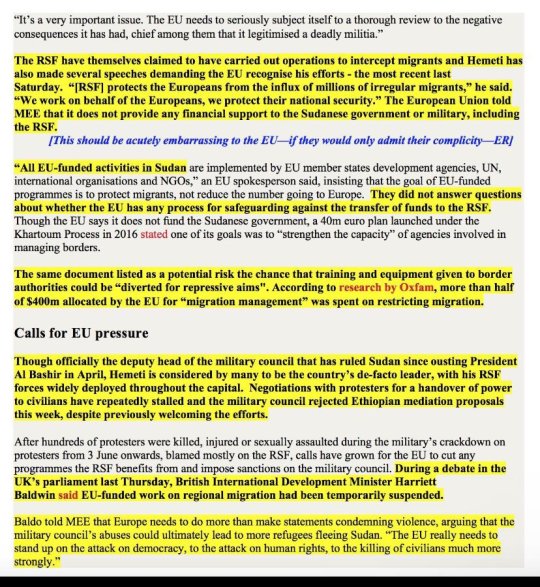
9- The US
During the transitional period, there were long bread lines, and sometimes people had to wait for days to get gas. And that could have been avoided if:
1) The U.S was quicker in getting Sudan off the state sponsor of terror list which blocked it from much of the global economy. It was particularly insulting that they demanded that the only way to do that was to 'normalise' relations with Israel.
2) If the U.S wasn't insisting that the government (which arose because the Sudanese people overthrew Bashir's regime) pay reparations to the U.S for an attack that they had nothing to do with.
3) If the IMF didn't force Sudan to cut fuel and bread subsidies to get debt relief after Bashir's overthrow. One of the triggers for the 2018 revolution was that Bashir was also forced to do this. It made life miserable.
10- Saudi Arabia
The Saudis and Emiratis have turned to battle-hardened forces from Sudan with combat experience in Darfur and other parts of their country. In fact, 8,000-14,000 Sudanese mercenaries including child soldiers between the ages of 13 and 17.
Many of the Sudanese fighters in Yemen come from the Janjaweed (armed horsemen) RSF militias made up of ethnic Arabs from western Sudan, eastern Chad, and the Central African Republic (CAR).
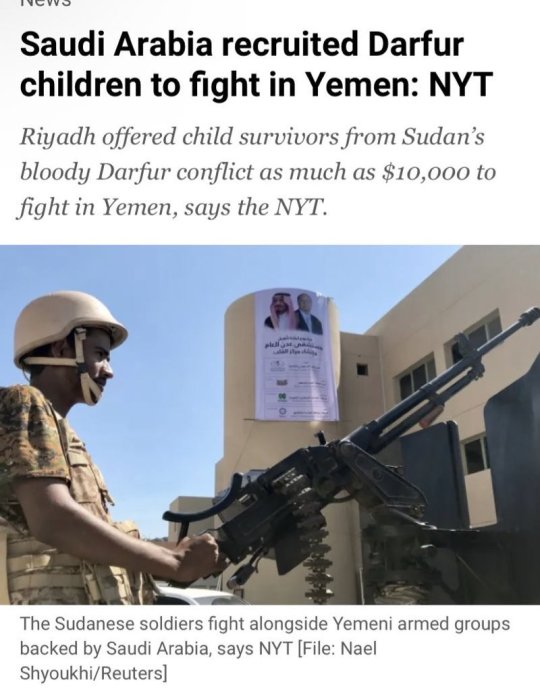

#sudan#rsf#rapid support forces#uae#united arab emirates#russia#wagner group#libya#chad#ukraine#israel#iran#european union#united states#saudi arabia#genocide
8 notes
·
View notes
Text
This Death That I Chose: Chapter 15
1044 words
CW: discussion of death
First, Previous, Masterlist
~~~
Marina nearly killed a Canadian Special Ops agent when she learned Tao and Lark were being airlifted out, without her.
They were both in dire need of surgery that the camps Canada had set up in the aftermath of the bombings couldn’t provide. Tao’s knee was shattered, and had simply been immobilized with a cast and nothing more. Lark’s arm was completely botched, and would likely need to have a few inches more amputated in order to close it properly. Tao was at high risk of infection, and Lark’s infection had never fully healed.
A case worker promised them all, Marina would join them soon.
~~~
Tao lay in a hospital bed in Toronto, mind racing. The bedside table was scattered with pamphlets, detailing his options. The assistance he could apply for. Citizenship. Protection.
He wondered if Lark was being bombarded with information as well, information he’d have little frame of reference to process. He’d been barely a teenager when this war began.
There was a TV in Tao’s room, something he hadn’t seen in a long time – by choice, as the airwaves in the remains of the US were flooded with the Commander’s propaganda. But this one showed channels that made Tao grin like he was seeing an old friend. Cartoons. Shopping networks. Real news.
News of the Commander’s death; of the Capitol’s fall; of the Military’s dispersal. News of the camps being set up by the UN, by Doctors Without Borders, taking in anyone and everyone. Even the Commander’s deserters.
It had all become too much, eventually. Tao had turned the TV off, set aside the pamphlets, shut his eyes, and tried to calm down. But the ringing in his ears never quite left. The buzzing in his bones never quite settled.
Until someone slipped into his room.
“Lark!” Tao jerked his head up, “Hey!”
“Hey.” Lark stopped by the door, slightly hunched, his eyes scanning the room as if for threats.
“Come in, come in!” Tao waved at a chair by his bedside, “Come sit!”
Lark moved further into the room and tentatively sat, watching Tao out of the corner of his eye.
“Are you okay?” Tao couldn’t help but look over Lark, taking in his slightly shorter left arm, wrapped snugly in compression bandages. “Are you supposed to be walking around?”
“Yeah, I’m okay, it’s okay,” Lark bobbed his head.
“I would’ve come to see you, but…” Tao waved a hand at his leg with a hint of frustration.
Lark nodded again. “Are they…” his eyes darted around the room once more, “Making you talk to somebody?”
“No. Are they making you talk to somebody? An investigator, or…?”
“She says she’s a counselor. She wants me to tell her about the Commander.”
Tao considered this for a moment before speaking.
“You shouldn’t have to talk about anything you don’t want to talk about,” he said gently, “But it might be good. To talk to her. Is she nice?”
“She’s okay. She’s the only one who will call me Lark, everyone else…” Lark trailed off.
Tao decided to risk it.
“What… happened to Karlo?” he asked gently.
“Karlo died.” Lark didn’t hesitate. He stared at the floor, his face soft and sad.
“Where did Lark come from?” Tao ventured.
Lark didn’t speak for several minutes. They sat together in a somber but comfortable quiet while he gathered his thoughts. Then he began.
“I wasn’t alone, in the beginning. There were four of us. We became friends. We had to, there was – there was nothing else. But one of them, he and I – whenever I was scared, he’d tell me about birds. He knew everything about birds. And we could hear one, where we were. And it was a lark.” He hesitated, then added quickly, “His name was Evan, and I really loved him.”
Tao took a little while to absorb this, letting the room lapse back into silence.
“What happened to them?” he eventually asked, feeling like he already knew the answer.
“They died, too.”
Tao was at a loss for words.
“I’m so sorry, Lark.”
Lark shrugged, his eyes still glued to the floor.
“I just don’t think about it.”
Now Tao was the one who took some time to plan his words, picking at a loose thread in the hospital blanket.
“Lark… If you never think about the people that you’ve lost, you’ll start to forget them. And that’s worse than the pain of remembering.”
Lark ducked his head down further.
“But I wasn’t allowed, to be in pain, around the Commander. Unless that’s what he wanted. I couldn’t cry, or be distracted, or sad, ever.”
“But you can do all that now,” said Tao emphatically, “No one is expecting you to hold it together, Lark. You can be sad. You can be in pain. You can cry.”
Lark looked up and around again, his eyes darting over the door before returning to Tao.
“Maybe just around you?” he whispered, like he was asking permission.
“Of course,” Tao immediately replied.
Lark dropped his head again, rubbing his hand up and down his thigh. His chin started to tremble.
“…I miss my mom.”
“Oh, bud, c’mere.” Tao reached out an arm. Lark slowly got up and paused next to the bed, blinking back tears, before giving in and climbing on to lie next to Tao, resting his head on Tao’s shoulder. Tao wrapped his arms around him, pulling him close.
“You can cry. I don’t mind at all.”
Lark’s body shook with silent, suppressed sobs. After a minute they broke through into audible cries, punctuated by sniffles. Tao pressed his own sleeve to Lark’s nose.
“It’ll be okay. Your mom will catch up with us soon.”
Tao knew she would. There was no way that Marina Dolidze would be separated from her son for one second longer than was absolutely necessary. And she had help – Becca would get her to Canada, no matter what. Tao also knew, deep down in his bones, that they were safe now. That maybe things would be complicated, and difficult, and frustrating, but they were no longer in danger. Lark was no longer in danger. Eventually, they’d be able to live in peace.
And he also had the feeling that, someday, Karlo would come home.
END
~~~
First, Previous, Masterlist
Taglist: @angst-after-dark, @sunshiline-writes, @flowersarefreetherapy, @pigeonwhumps, @whump-em, @morning-star-whump, @thecyrulik, @honeycollectswhump, @pumpkin-spice-whump
18 notes
·
View notes
Text
K9 Hybrid Gear and Civvies Guide:

Tac Gear:
A military K9 hybrid’s gear is specifically designed to enhance both their human and canine traits, optimizing them for tactical operations while providing protection and communication tools. Here’s a breakdown of what their gear might include:
1. Tactical Vest/Body Armor:
• Material: Made from lightweight yet durable materials like Kevlar or ballistic nylon, offering flexibility and protection.
• Design: The vest is form-fitted to the hybrid’s body, allowing freedom of movement for their human torso and canine-enhanced limbs (if applicable).
• MOLLE System: Like their human counterparts, the vest has a MOLLE (Modular Lightweight Load-carrying Equipment) system for attaching pouches, gear, or identification patches.
• Armor Plates: Some models may include armor plates over vital areas like the chest and back for protection in combat scenarios.
• Velcro Patches: Custom patches for identification (e.g., name, unit, or flag) can be attached, as well as handler-specific patches to show their bond.
2. Collar:
• Military Hybrid Collar: Resembling a communication collar, it holds an integrated microphone and speaker for direct communication between the hybrid and handler. The collar is sturdy, made with metal reinforcements to withstand rough environments.
• Customization: Some collars are personalized, such as Y/n’s, which might have a metal plate engraved with her handler’s name (Alex Keller), symbolizing their connection.
• Attachment Points: There are rings for attaching a leash or other equipment, though leashes are rarely used for hybrids, except in specific scenarios.
3. Headgear/Comms:
• Earpieces: Built-in communication systems in their collars or headsets allow the hybrid to receive commands from their handler directly.
• Headset Attachments: Some hybrids may wear lightweight helmets or headgear that accommodate their ears and protect their heads, with areas to mount night-vision goggles or cameras.
• Night Vision/Camera Gear: Headsets may include advanced technology such as cameras or night-vision gear to help hybrids navigate in low-light situations.
4. Gloves and Footwear:
• Gloves: Designed for hybrids with more animal-like claws or enhanced dexterity, gloves are reinforced to protect their hands without hindering their ability to climb, grab, or fight.
• Footwear: High-performance boots or paw protectors for hybrids ensure they can move across rough terrain while maintaining their balance and agility. Some may have specially designed soles for stealth and grip.
5. Harness:
• Load-Bearing Harness: A harness often attached to the vest, this is used when hybrids need to carry extra equipment such as first aid kits, tactical gear, or ammunition. It may also include an extraction handle, allowing their handler to pull them out of danger if necessary.
• Attachment Points: The harness has reinforced points to attach ropes, useful for rappelling or being airlifted in certain operations.
6. Goggles:
• Protective Eyewear: Tactical goggles shield the hybrid’s eyes from debris, sand, and other environmental hazards. Some might even have built-in HUDs (heads-up displays) for enhanced battlefield awareness.
7. Camo Integration:
• Fur/Armor Coloration: Depending on the environment, the hybrid’s gear will match the standard military camo. Whether it’s desert, woodland, or urban camouflage, the materials and design aim to provide additional stealth.
8. Weapon Mounts (if applicable):
• Some hybrids, particularly those with canine or feline features, may have mounts for lightweight firearms or tactical tools attached to their harness for ease of access by the handler.
9. Hydration System:
• A built-in hydration system similar to a CamelBak, allowing the hybrid to stay hydrated during extended missions without needing to stop for water breaks.
10. Tracking/Monitoring Systems:
• GPS: Built into their collar or vest, providing real-time tracking of the hybrid’s location on the battlefield.
• Vital Monitoring: Sensors that monitor the hybrid’s heart rate, body temperature, and stress levels can alert handlers to any issues in the field.
This hybrid gear is a seamless blend of practicality, protection, and comfort, ensuring that K9 hybrids can perform in dangerous environments while staying closely connected to their handlers.

Civvies:
A hybrid’s “civvies” are designed for both comfort and practicality, blending the functionality required for their unique physiology with a casual style suitable for off-duty life. The clothing is made from durable, flexible materials that allow freedom of movement and accommodate their hybrid traits like tails, ears, and claws.
Top: Hybrids typically wear a simple, fitted shirt, often sleeveless or short-sleeved, allowing their shoulders and upper bodies to move freely. The material is breathable and slightly reinforced around the shoulders and upper back to prevent wear from repeated stretching and movement. The shirts often have slits or custom tailoring to accommodate tails comfortably.
Bottoms: Cargo pants or loose-fitting tactical trousers are a staple in a hybrid’s off-duty wardrobe. These pants have adjustable waistbands and are designed with reinforced stitching around the thighs and knees for extra durability when in their preferred position of kneeling and sitting. The legs taper slightly to avoid restricting movement, allowing their legs to move unhindered, especially when they need to leap, crouch, or sit. Some hybrids may opt for shorts in warmer climates, but they are always practical and rugged.
Footwear: One of the most distinctive features of a hybrid’s civilian outfit is their unique footwear. Hybrids wear foot coverings similar to trapeze boots, which are designed to protect the soles of their feet while leaving their claws free. These boots are lightweight and open at the toes, with a sturdy base that provides grip and protection from rough terrain or base flooring. The design allows hybrids to extend and retract their claws naturally, giving them agility while keeping their feet safe. The boots often feature adjustable straps or fastenings to ensure a secure fit without restricting their natural foot shape or flexibility.
Outerwear: For cooler weather, hybrids may wear jackets or hoodies that are custom-fitted to allow for their tails. These pieces often have slits or adjustable flaps at the lower back to provide space for tail movement. The jackets are usually made from tough, weather-resistant fabric, ensuring that hybrids can comfortably wear them on or off base.
Accessories: Hybrids may also wear fingerless gloves that allow their claws to remain free for precise movements while still protecting their hands. They might also carry belts with small pouches for personal items, maintaining a functional look even while off duty.
5 notes
·
View notes
Text
Some info on the history of the phrase "rapid unscheduled disassembly" - it is not a Musk or Space X invention
TL;DR: The term and/or close variants go back to at least the the late 60s, and quite possibly even earlier.
"catastrophic self-disassembly." - referenced in Ignition!, printed in 1972, about aircraft with exotic propellants
"rapid unplanned disassembly" - Cruising World magazine, 1991 about sails of all things
"rapid unintentional disassembly" - Gunner's Mate G 3 & 2, US Navy, 1970, about guns
"unscheduled disassembly" - The MAC Flyer, US Military Airlift Command, 1967 (page 25), about aircraft
All from the above Space Exploration Stack Exchange question. In addition to people commenting that they personally heard it 80s etc.
I am sure a thorough investigation could find a lot more.
2 notes
·
View notes